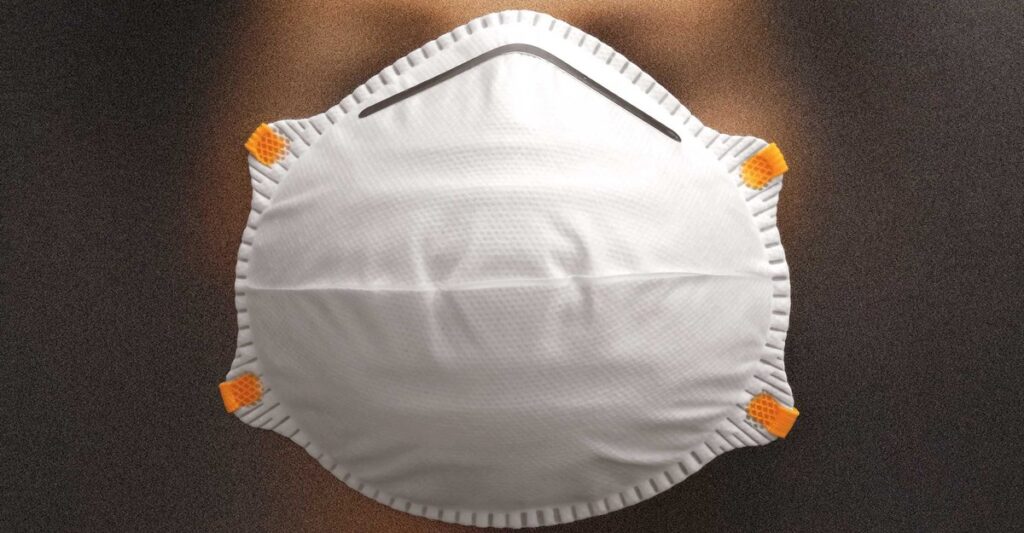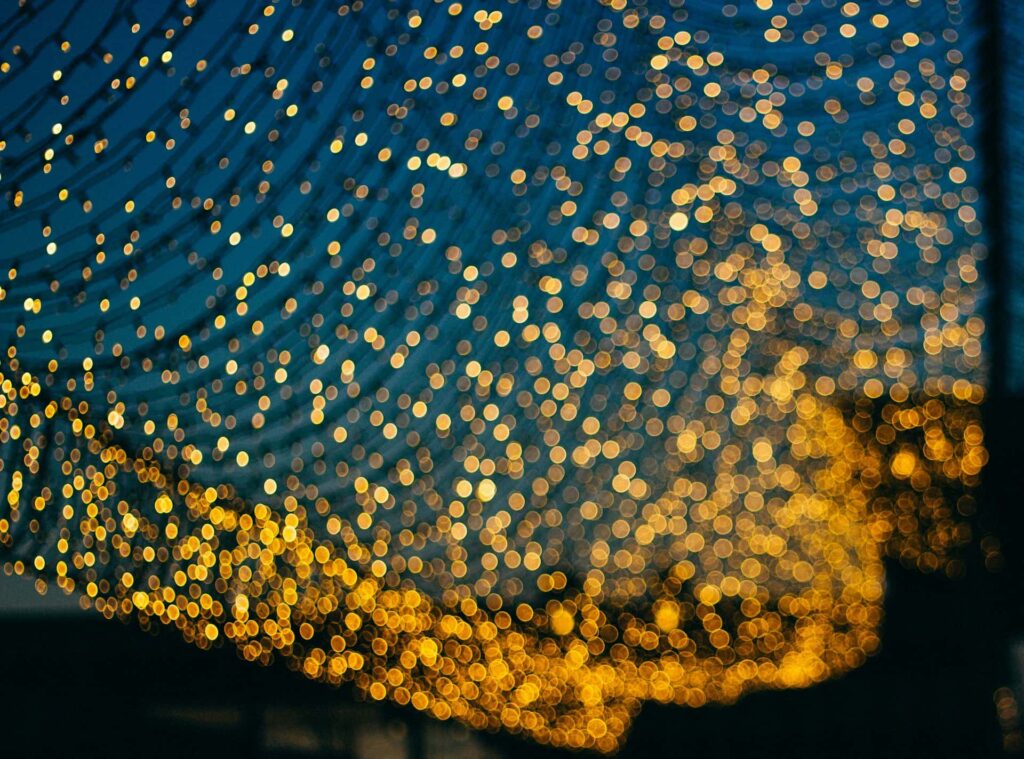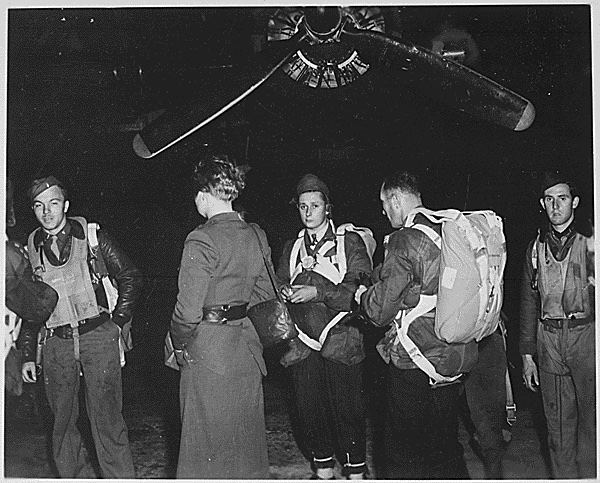“It breaks my brain sometimes,” Dennis Rosloniec told me. For half a decade now, the 44-year-old media technician and mountain biker from Green Bay, Wisconsin, has done everything he can to understand the risks of getting COVID. He’s read the published studies. He’s looked at meta-analyses. And here’s the truth as far as he can tell: Each time he’s infected, the chances that something really bad will happen to his body ratchet up a little higher.
Dennis is not immunocompromised. He doesn’t have a chronic illness. He’s not obese or hypertensive or unvaccinated. He’s just a thoughtful autodidact, the kind of guy who references both The Simpsons and the Stoics as he talks. “I’m a fairly large, fit, white dude, for lack of a better term,” he said. But even now, in 2025, Dennis Rosloniec is afraid of COVID. Someone else might say he’s strangely so.
Dennis is still masking quite a bit. He’s wary of attending indoor social gatherings unless they seem especially important. And he’s been taking sundry extra measures to protect himself, based on fledgling research that he’s either heard about or read online, since 2020, when he bought a tube of ivermectin, the antiparasitic drug that was repurposed as a highly suspect COVID treatment, “out of anxiety” while awaiting the vaccines. Later on, he tried iota-carrageenan nasal spray, which he used as a hedge against COVID infection until “the science became sort of iffy on it.” These days, he keeps a bottle of cetylpyridinium-chloride mouthwash in his desk, so he can gargle when he thinks he might have been exposed. And he’s got a prophylactic nasal rinse, which, actually, he’s come to sort of like for reasons that don’t have much to do with COVID. “I breathe better through my nose when I use it.”
As a masker—and as a mouthwash guy and a nasal-rinser—Dennis knows he’s out of step with almost everyone he sees in person. “You feel pressure from the world,” he told me. “It makes you question, Is this really worth it?” But he also knows that certain others share his sense of caution, or even worry more than he does. He interacts with them online, on message boards for “COVID conscious” conversation. Theirs is a kind of shadow world where the fears and obligations felt by everyone in early 2020 never really went away, and lockdowns still persist in private.
Members of these groups say they’re only doing what they’ve always done since the start of the pandemic: In the parlance of the boards, they’re “still COVID-ing.” But some are also going further to protect themselves than they did in 2020, and seeking out new strategies for staying safe. They share tips online for how to fit their N95 masks, or for taping filters to the spouts of snorkels so they can safely visit indoor pools. They talk about the challenges of COVID-conscious parenting, and meet up for COVID-conscious church events on Sunday Zooms. They share lists of COVID-conscious therapists who would never try to tell you that you’re too afraid of getting sick, or that your risk perception is distorted, or that the problem here is not the world’s but your own.
The pressure that they feel from others used to be a little worse. Not so long ago, just the sight of someone in a mask was read as a reproach, a sanctimonious demand that lockdowns should continue for us all. Or maybe it was taken as “a reminder of how awful the last few years had been,” Lauren Wilde, a COVID-conscious therapist in Washington State, told me—“of how many people had died, of how much it sucked to get COVID.” But now that tension has started to subside. When people walk around in masks in 2025, or insist on having lunch outside even in the dead of winter, they find that their cautious habits earn them fewer angry looks. They’re less reviled than they used to be. They’re more often just ignored.
Amid the nation’s mass indifference, their isolation has only gotten more intense. Their epistemic bubble has been shrinking too. This used to be the group that was most attuned to what “the science” said; the ones who paid attention to the dots painted on the sidewalk, six feet apart. In the past few years, as official rules for social distancing have been revoked, they’ve had to make up new ones for themselves. As standard COVID medicines grew ever more expensive, they’ve had to scour for alternatives. And as basic research on the virus hit a wall, they’ve had no choice but to do their own. “The COVID-19 pandemic is over, and HHS will no longer waste billions of taxpayer dollars responding to a non-existent pandemic that Americans moved on from years ago,” the U.S. Department of Health and Human Services said last week, as local health departments braced themselves for funding cuts.
The COVID-conscious people have not abandoned science, Dennis told me. It’s the opposite: They’ve come to think that science has abandoned them.
If the evermaskers seem a little weirder every year, that’s because, in many ways, they haven’t changed at all. At a basic level, their COVID-conscious attitudes may not be so far from the mainstream. Twenty-one percent of Americans still think of the disease as “a major threat” to public health, according to a recent poll from Pew Research Center. Thirty-nine percent say we’re not “taking it seriously enough.” But if 50 million to 100 million adults harbor such concerns, very few are doing much about them. Masking rates were once as high as 88 percent; now they’re close to nil.
For those who still maintain their masking habit—4 percent, says Pew—the whiplash in social norms has been a shock. When masking mandates went away for public transportation, in the spring of 2022, viral videos showed people cheering as they ripped the fabric off their face. Wilde told me she remembered feeling how “it was like, nothing has actually changed, apart from the fact that someone with authority has said you don’t have to do this anymore. COVID is still risky; it’s still a new disease; we don’t know what happens 10 years after you’ve had it.” Why was everyone so quick to abandon those concerns?
The coronavirus never stopped its killing rampage: Hundreds of Americans die from it every week, even now in March of 2025, when the pandemic emergency is over and the virus is theoretically offseason. Nearly 50,000 people died from COVID in the U.S. last year, too. (The disease remains among the nation’s leading causes of death, on par with traffic accidents and suicides.) Yet even those alarming figures seem to matter less to COVID-conscious people than the vaguer risk of long-term complications. “It’s less about death, because if you die that sucks but you’re dead,” said Tess, a 35-year-old public-health researcher who asked to use her first name only, so that her professional work would not be connected to her COVID advocacy. “It’s disability. It’s living through it.” Tess told me that she already has long COVID, with brain fog and some loss of function in her lungs. “I want to maintain whatever health I have, and not make it worse,” she said.
Nancy, a 69-year-old woman who runs two weekly Zooms for COVID-conscious people from her home, and who requested to be identified by only her first name out of concern for her privacy, said that she and many members of her groups were less afraid of death than of a “reduction in our quality of life.” “Some of the data shows that if you keep catching it over and over and over again, that your chances of developing long COVID increase,” she told me, “and it also gradually weakens your immune system.”
Other data tell a different story, though. Some studies do suggest an ever-growing threat of long-term symptoms with each new SARS-CoV-2 infection. But according to the U.K.’s Office of National Statistics, which did perhaps the most thorough tracking of long-COVID rates through late 2022, the risk of long-term complications had been going down with reinfection. And although the coronavirus has produced several major spikes of new infections across the past five years, the proportion of those in the U.S. who report having disabilities has been either stable or increasing at a steady pace (depending on which agency’s data and definitions you consult). That means it hasn’t tracked each COVID wave the way that deaths have. According to one sensible interpretation, the risk of long-term disability was greatest early on in the pandemic, but long COVID’s threat, like the threat of COVID overall, has been fading over time.
The truth, or its best approximation, may be, to some extent, irrelevant. How any given person will perceive a threat is “a deeply psychological phenomenon,” Steven Taylor, a clinical psychologist at the University of British Columbia and the author of The New Psychology of Pandemics, told me, and one that is “influenced by values, your past history, your medical history, and your mental-health history.” (In the U.S., at least, people’s sense of risk from COVID, in particular, also has a strong connection to their politics.) Unless someone’s COVID-cautious habits have been causing major problems in their life, there’s no point in trying to discourage them, Taylor said. “I would let people choose their level of comfort with threats. That’s their decision.”
Yes, the evermaskers have assessed the costs and benefits of keeping up precautions. And yes, they say they’re happy with the trade-off, despite the many people who claim to know they’ve chosen wrong.
“There are some things that I miss,” Tess told me. “I miss a good punk-rock show where we’re all sweaty in the pit and that kind of stuff. That’s not necessarily something I’m gonna do now, but I have an approximation of it when I go to an outdoor punk show and I let everybody else go in the pit.” Nancy told me that she and her husband still have active social lives. They converse with neighbors from a distance: “We just holler and say hi to each other. It’s not like we’re living as monks or something, in total isolation.” And then she has all the people from her Zoom groups. “I think I have more friends now than I ever had in my life,” she said.
Certain challenges persist. Private or domestic disagreements over COVID-conscious choices—how to navigate the holidays, what to say to friends, which rules apply to kids—never go away. Nancy and her husband have two grown children and nine grandkids, all of whom have “gone on” from COVID, as she puts it. “There’s always a child that’s sniffling or coughing and you don’t know what’s going on,” she said. “We don’t like to make a big deal about it, so if we meet with them, we usually meet outside and do things outside together, but it’s hard.” Tess said she separated from her husband last year, in part because at one point he’d taken off his mask at work without telling her, got infected, and then passed along the illness. “Somebody who, literally, I just got married to, who I’m supposed to trust, lied to me, took away my agency, and got me sick,” she said. But moving out has not been easy: Any roommate she might find would need to share her views on COVID safety. (For now, she’s still living with her ex in a small apartment in the Bronx.)
Politics provide another potent source of conflict. Many COVID-conscious people are progressives and identify as advocates for those with disabilities. On Instagram, calls for staying COVID safe may be tethered to appeals to anti-racism, anti-capitalism, and anti-Zionism. For a set of people who feel a broader sense of crisis in America and despair at recent actions of the U.S. government, these concerns are additive. Having to accept the risk of getting COVID, Wilde told me, is just one more way “to feel like someone is trying to force something on you that you don’t want.”
A version of that complaint was once associated with people on the opposite end of COVID caution: those who resisted lockdowns and refused to wear masks. They voiced frustration, like the evermaskers do today, at a government that neglected their concerns, and at a public-health establishment that failed to meet their needs. Like the evermaskers, they felt forced to find their own approach to staying safe while other people yelled that they were wrong. I asked Wilde if she thought there might be some affinities between her own mindset and the one of parents who are opposed to vaccination, still another group of those who have come to trust their own judgment more than the government’s. “There’s a lot of overlap there. There just is,” she said. “That isn’t to say the people who are anti-vax have valid points at all. It’s just saying—and I say this a lot to the people I work with—being human is really hard.”
People tend to make it easier on themselves by remaining settled in the cultural mainstream. Those who break from that current may end up drifting past the limits of what’s agreed upon by scientists. Wilde gargles mouthwash when she feels at risk of an exposure to COVID; she also uses a nasal spray. She understands the weakness of the evidence—published trials of the cetylpyridinium-chloride mouthwash, for example, have found only the barest hints of its potential as a prophylactic—but what other tools does she have at her disposal? “Maybe these things don’t have any impact at all,” she said. Still, they’ve helped her get through some scary situations—and when it comes to scary situations, she treasures any help at all.
Dennis has a similar attitude. “Does it do anything? I’m not convinced,” he said of the mouthwash. “But, you know, it’s something that I can do.” He doesn’t trust everything he sees on COVID-conscious message boards, but at the very least, they let him know that other people in the world see risks the way he does. That’s important in itself. He said he took a recent flight to Ireland, and a small contingent of people were masking on the plane. One couple even tried to kiss each other with their masks in place. “Their faces did this high-five kind of thing … I was like, That’s really sweet. It just made me smile,” Dennis said. “We’re human beings, we want to belong to a tribe, right? We want to feel that sense of belonging.” Five years ago, it felt like everyone was in his tribe; it felt like all Americans were together in their fear of the unknown. Now that fear provides a rarer bond: togetherness in eccentricity, the communion of avoiding crowds.
Premium IPTV Experience with line4k
Experience the ultimate entertainment with our premium IPTV service. Watch your favorite channels, movies, and sports events in stunning 4K quality. Enjoy seamless streaming with zero buffering and access to over 10,000+ channels worldwide.

















